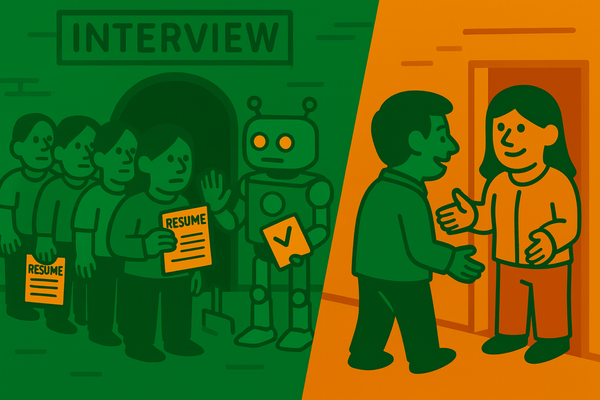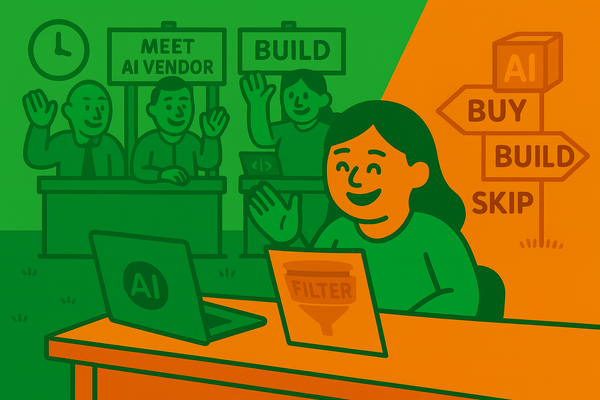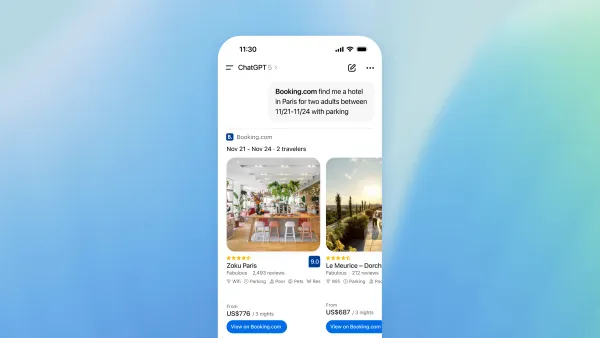Are You Secretly Losing the AI Race? (3 Tracks That Reveal the Truth)
The three-track framework that shows exactly where you stand and what to do next (whether you're early or already deep in).
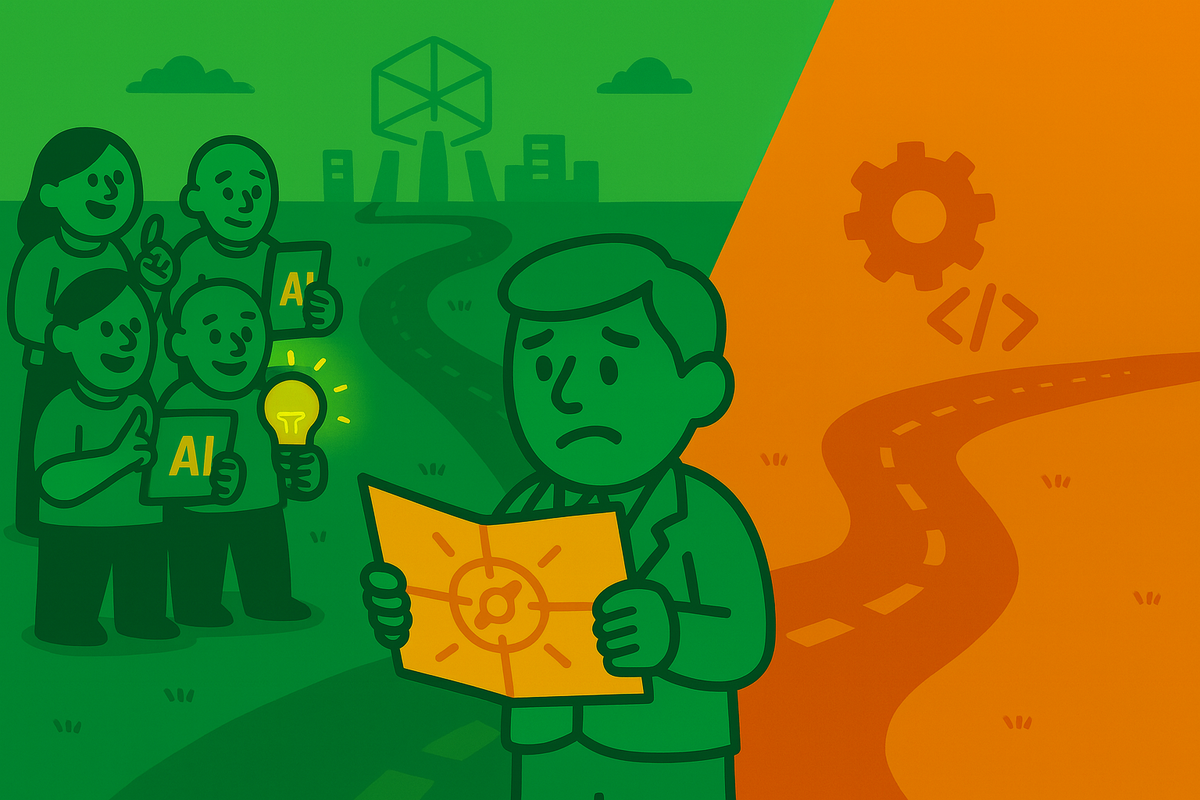
You got tapped to lead AI adoption.
Congrats. Now everyone's looking at you for answers you don't have.
Your exec team wants updates. Your team wants direction. And you're Googling 'AI strategy framework' at 11pm wondering if you're already behind.
Here's the truth: AI adoption isn't one linear path. It's three tracks running in parallel.
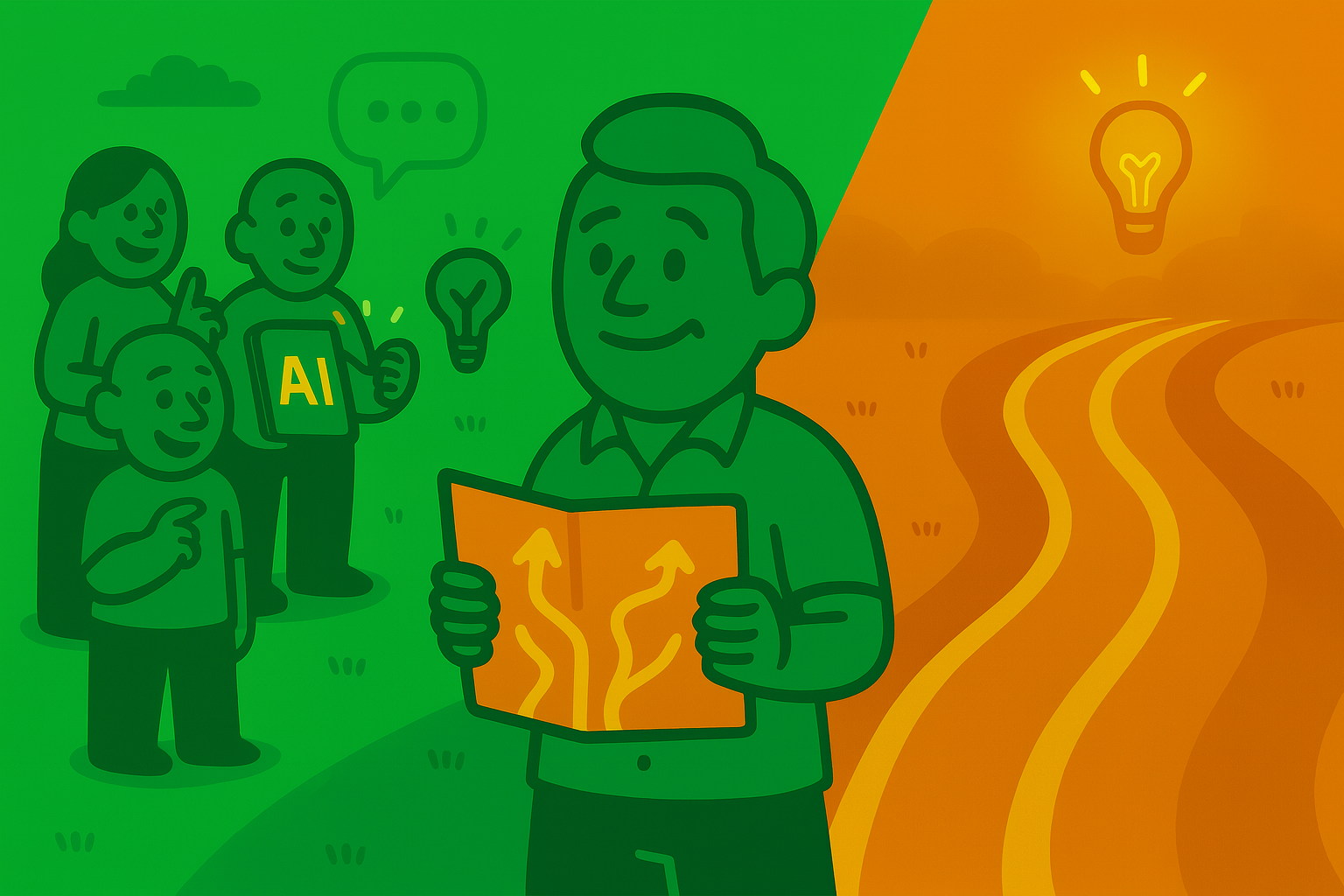
If you're already moving, this shows you what you might be missing. If you're completely lost, this is your anchor.
The best orgs are turning all three dials at once, even if unevenly.
Use this to check your position, spot your gaps, and make your next move with confidence.
Track 1: Team Adoption (Foundation)
You sent your team through AI training. Checked that box.
Sarah in ops is crushing it. Mike won't touch it because he's paranoid about data security. And half your team is generating AI slop that somehow makes MORE work for everyone else.
Leadership keeps saying AI is critical, but won't commit to tools or guardrails. So everyone's experimenting in the shadows with personal accounts and random tools nobody approved.
So now what?
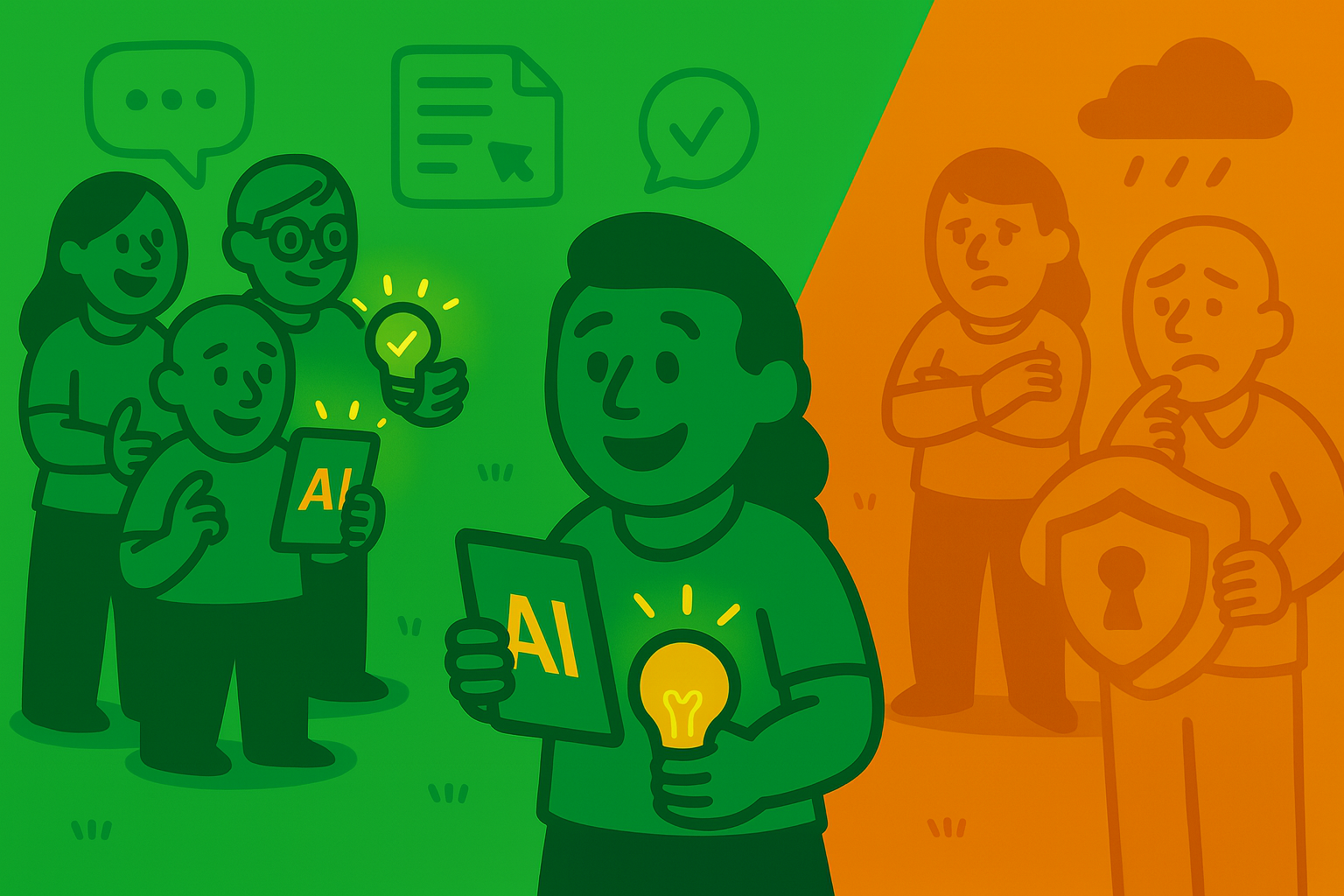
Try this instead:
☐ Get Leadership Backing: Your execs keep saying AI is critical. Great. Now they need to approve tools, set guardrails, and give authority to roll it out.
☐ One Approved Tool: Pick one Large Language Model (LLM) aand get it approved for team use stat (ChatGPT, Claude, Gemini).
☐ Real Training: Not slides about "what AI can do." Training that shows how AI works, teaches strategic prompting, reveals pitfalls, and builds the mindset to adapt as it evolves. → Here's train that transforms teams.
☐ Become Superusers: Every team member should get fluent with your approved LLM. Master this deeply and they'll pick up every other AI tool faster. → Here's how to turn your team into superusers.
☐ Mine Existing Tools: Your current stack is adding AI features. Audit what they have. Test them. Decide if they're useful or just marketing. Keep an eye on ongoing updates.
☐ Simple Coordination: Shared prompt library. Wins channel. 15-minute weekly sync. Make it easy for people to learn from each other.
Track 2: Workflow Automation (Efficiency)
You dial in to the AI task force every other week.
Your org is running pilots, even one led by your team. But results don't lead to anything.
It's scattered. Everyone is moving in different directions. To be honest, you're not sure you'd call anything a real win.
Here's why: You're spending energy on AI activity instead of AI that changes how work moves.
Task forces. Pilots. Tool testing. It feels productive, but the real wins come from automating the handoffs where work sits and delays action.
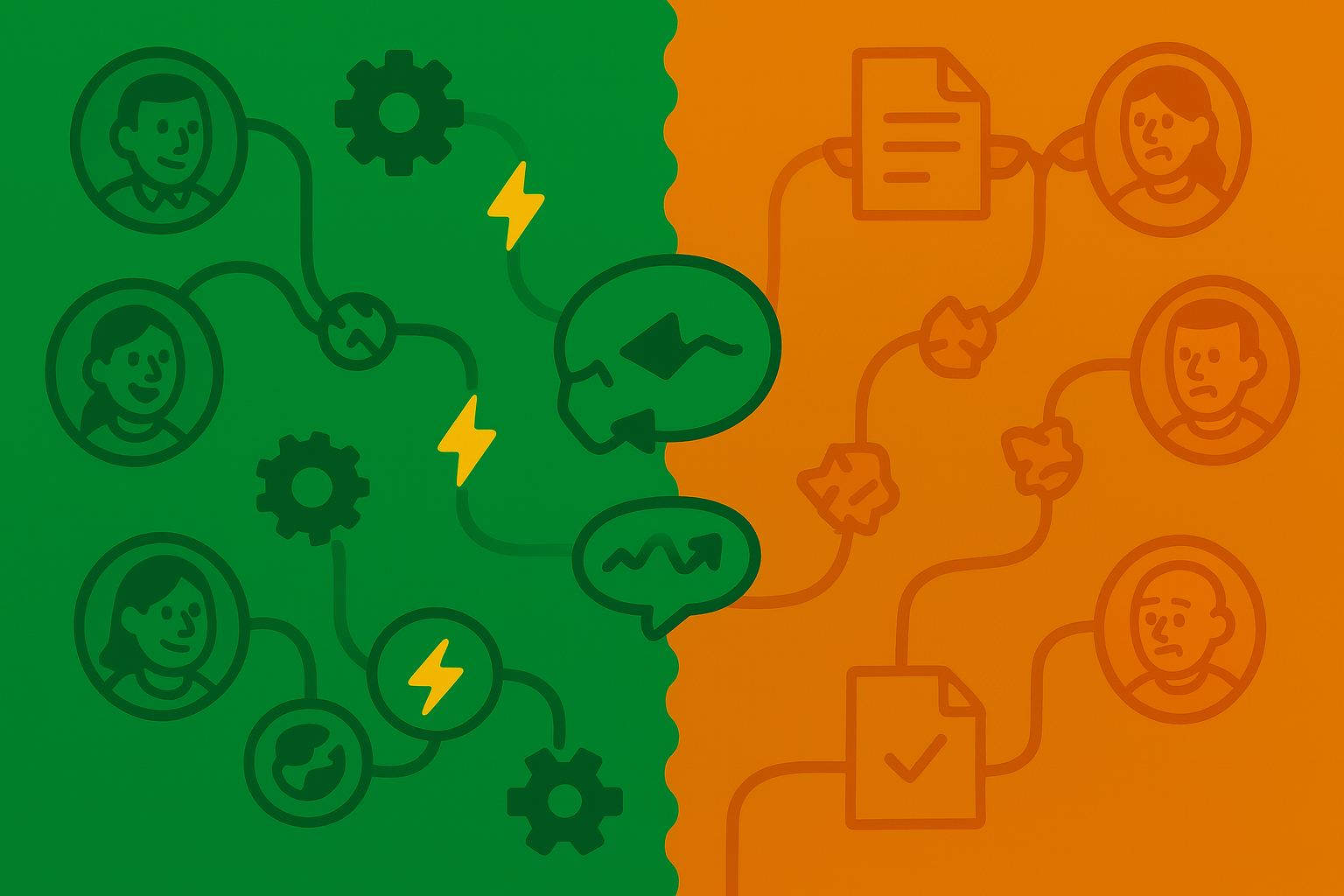
Try this instead:
☐ Start with Existing Processes: Don't hunt for shiny AI use cases. Look at the boring, repeatable work that already eats hours. That's where automation pays off immediately.
☐ Focus on Cross-Team Handoffs: Finance approvals. Marketing-to-legal reviews. Sales handoffs. These delays compound. When work sits waiting, that's where automation makes the biggest impact.
☐ Partner Technical & Non-Technical: Your best non-technical people know where the problems are. Pair them with IT, devs, or external builders who can automate them safely and make them scale.
☐ Set Guardrails Early: Create rules now so you don't end up with unsafe processes or pilots that die because nobody thought about security, compliance, or maintenance.
☐ Build a Velocity Squad: Skip the task force. Create a small cross-functional team of forward-thinking AI users who move fast. No spectators. No "let's explore this" types. People who see solutions, not blockers.
Track 3: Workflow Transformation (Reinvention)
You've got momentum. Your team is using AI. You've automated some workflows. Leadership sees results.
You feel like you're ahead.
But here's the uncomfortable truth: You're still just making old processes faster.
While you're optimizing, someone else is building processes that only exist because of AI, and you can't compete with that by being 20% more efficient.
The orgs actually pulling ahead are asking "if we blew things up and built systems from scratch today, what would it look like?"
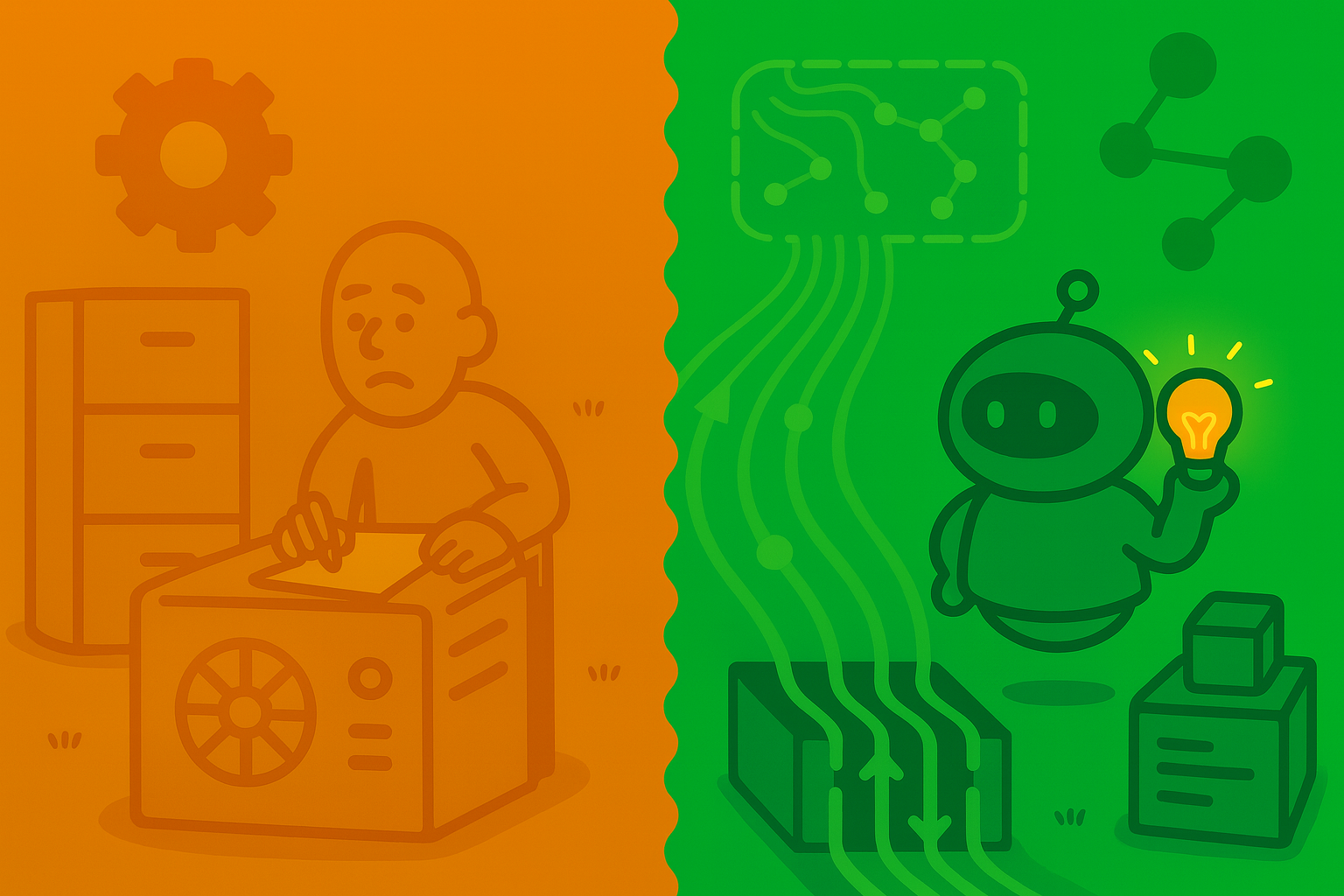
Try this instead:
☐ Get Your Data Ready: Make sure your data is clean, structured, and accessible. Bad or messy data kills advanced workflows before they start.
☐ Move to Multi-Step Agents: Stop thinking in single tasks. Start building agents that handle complex workflows with multiple steps and human oversight at key decision points. This is where AI goes from helper to operational infrastructure.
☐ Build AI-Powered Knowledge Systems (RAG): Connect AI to your internal knowledge (docs, databases, past projects). Let it surface information instantly instead of making people hunt through folders and ask around.
☐ Redesign, Don't Just Automate: Stop asking "how do we make this process faster?" Start asking "if we built this from scratch knowing AI exists, what would it look like?"
☐ Give Your Best Thinkers Time to Redesign: Transformation takes your best people from each department thinking through "what would this look like built from scratch?" Not in a task force, but focused work sessions where they can brainstorm totally new systems.
☐ Measure AI Like Other Investments: Stop treating AI like R&D. Start measuring it like any other business investment. If it's not moving a real number something isn't working. Uncover what that is.
How to Pull Ahead
AI adoption isn't a race you win by finishing one track before starting the next.
- Track 1 builds confidence and skills.
- Track 2 delivers ROI and efficiency.
- Track 3 reinvents the way you work.
Orgs that are pulling ahead? They're moving all three tracks at once. Unevenly, maybe. But deliberately.
Don't get caught chasing the splashy stuff - AI-powered products, customer-facing features, demos that make headlines - while your team still can't write a decent prompt.
Your advantage is internal. Team capability. Clean workflows. AI-native thinking.
Pick one action from each track. Make your plan. Move this week.
Not a subscriber yet? Join here for weekly insights on AI, strategy, and the changing workplace.
Found this useful? Forward it to a teammate who’s figuring out AI too.



